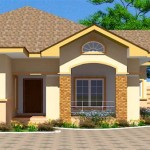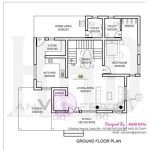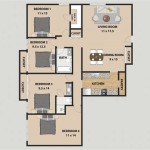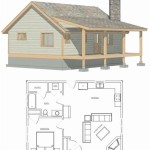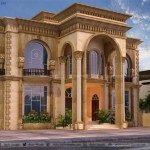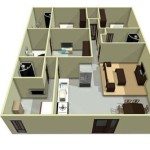Simple Two-Level House Plans
Two-level house plans offer numerous advantages, including efficient use of space, separation of private and public areas, and enhanced curb appeal. These plans cater to a wide range of lifestyles and lot sizes. This article explores key considerations for selecting and implementing a simple, two-level house plan.
Benefits of Two-Level House Plans
Two-story homes offer a practical solution for maximizing living space, especially on smaller lots. The vertical design allows for a larger footprint without sprawling outwards. This can be particularly advantageous in urban or suburban areas where land is at a premium.
Key Considerations for Choosing a Two-Level Plan
Selecting the right two-level house plan involves careful consideration of several factors. Lifestyle needs, budget constraints, and local building codes all play a crucial role in determining the ideal design. Analyzing these factors early in the process can prevent costly revisions and ensure the final design aligns with homeowner expectations.
Space Allocation and Functionality
Effective space allocation is paramount in two-level house plans. Designers often designate the first floor for public spaces like the living room, kitchen, and dining area, while the second floor typically houses bedrooms and bathrooms. This division creates distinct zones for family interaction and private relaxation.
Staircase Design and Placement
Staircases serve as a focal point in two-level homes, influencing both aesthetics and functionality. Placement of the staircase should optimize traffic flow and minimize wasted space. Options include straight staircases, L-shaped staircases, and spiral staircases, each with its own advantages in terms of space efficiency and visual impact.
Maximizing Natural Light
Incorporating ample natural light enhances the ambiance and energy efficiency of any home. Two-level designs present unique opportunities to maximize natural light penetration. Strategically placed windows, skylights, and open floor plans can contribute to brighter, more inviting living spaces.
Exterior Design and Curb Appeal
The exterior design of a two-level house significantly impacts its curb appeal. Architectural styles range from traditional to contemporary, each with distinct characteristics. Considerations include rooflines, window styles, siding materials, and landscaping to create a cohesive and visually appealing facade.
Budgeting and Cost Considerations
Building a two-level home involves various expenses, including land acquisition, materials, labor, and permits. Developing a realistic budget upfront is crucial to avoid financial strain. Careful planning and material selection can help manage costs without compromising the desired design elements.
Working with Architects and Builders
Collaborating with experienced architects and builders is essential for a successful project. Architects provide design expertise, while builders ensure the project adheres to building codes and quality standards. Effective communication and collaboration between these professionals streamline the construction process and ensure the final product meets the homeowner's vision.
Adaptability and Future Expansion
Choosing a flexible design allows for future adaptations and expansions. Consider potential needs like growing families or changing lifestyles. Incorporating adaptable spaces or unfinished areas can accommodate future renovations without major structural changes.
Energy Efficiency in Two-Level Homes
Designing for energy efficiency is crucial for minimizing utility costs and environmental impact. Two-level homes can benefit from features like high-performance insulation, energy-efficient windows, and properly sealed ductwork. These features contribute to a more comfortable and sustainable living environment.
Garage Placement and Functionality
The garage is an integral part of many two-level house plans. Options include attached garages, detached garages, and basement garages. Careful placement and design of the garage can enhance both curb appeal and functionality, providing convenient parking and storage space.
Outdoor Living Spaces
Extending living spaces outdoors can greatly enhance the enjoyment of a two-level home. Decks, patios, and balconies provide areas for relaxation and entertainment. Integrating these spaces seamlessly with the interior layout creates a cohesive and functional living environment.
Maintenance and Upkeep
Maintaining a two-level home requires regular upkeep. Consider accessibility for cleaning and repairs, particularly for exterior elements like windows and gutters. Planning for maintenance early in the design process can simplify upkeep and prevent costly repairs in the future.
Building Codes and Regulations
Adhering to local building codes and regulations is mandatory for any construction project. These codes address safety, structural integrity, and accessibility. Working with experienced professionals ensures compliance with all applicable regulations and prevents potential legal issues.

Unique Simple 2 Story House Plans 6 Floor Two Cape Ranch Style

Simple House Design Plans 11x11 With 3 Bedrooms Full Two Story Double Y Small Floor

Small 2 Y House Plans Pinteres Two Story Double Floor

Building Designs By Stockton Plan 2751 House Plans Double Story Y

2 Y House Plans Floor Plan With Perspective New Nor Two Story Cape Ranch Style

2 Story House Floor Plans With Measurements Inspiring High Quality Simple 3 Two Modern Garage

Low Budget Simple Two Story House Design Plans Blog Eplans Com

High Quality Simple 2 Story House Plans 3 Two Floor New Blueprints

Simple 2 Y House Design With Floor Plan 32 X40 4 Bed Room Plans Three Bedroom

18 Small House Designs With Floor Plans And Decors

